Just when you think you have all the 50mm Leica lenses you need, here comes another one…
The 50mm focal length is often regarded as the classic choice. It provides a natural perspective and was the preferred focal length of legendary photographers like Henri Cartier-Bresson. Its versatility makes it ideal for everything from landscapes to portraiture.
Leica has now reintroduced the Leica 50mm Summilux-M f/1.4 II once again as a Heritage lens, and at a fair price. In this article Milan Swolfs takes the new reissue for a test.

Leica M11-D with Leica 50mm Summilux-M f/1.4 II Reissue 2025. © Milan Swolfs.
Most Leica photographers tend to be either 35mm or 50mm photographers. The Leica system was originally designed for 50mm, and with the introduction of the first 35mm lens in 1930, the 35mm and 50mm have been competing to be the most used.
When you think of a Leica 50mm lens, the names Summicron, Summilux, and Noctilux immediately come to mind—each defining the speed of the lens.
The Summicron at f/2.0 is the slowest of the three, the Summilux sits in the middle at f/1.4, and the Noctilux is the fastest at f/0.95.
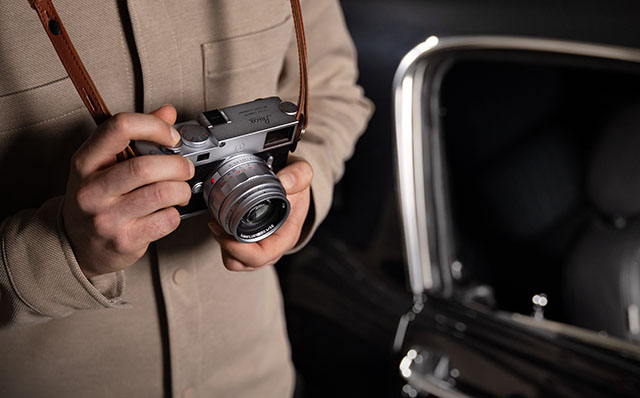
The Leica 50mm Summilux-M f/1.4 II reissue of the pre-APH version.
My personal choice: 50mm
Personally, I am primarily a 50mm shooter. As a portrait photographer, I naturally frame most of my shots in portrait orientation—it’s how I see the world. It may also align with how most people consume images today through book pages, smartphones, and social media.
Of course, I own multiple Leica 50mm lenses and often bring two different 50mm lenses to a shoot. For color work, I might use a 50mm Summilux ASPH or the Noctilux f/0.95, while for monochrome photography, I lean towards a classic Noctilux f/1.0 or a slower Summicron f/2.0 “Rigid”.
My preference for 50mm over 35mm comes from the slight compression it offers, which I find more flattering for portraits. The way I shoot is instinctive: I pick up a camera with a 50mm lens and immediately know what my frame will look like.
The Leica Heritage Lenses
Apart from the technical aspects, I have a deep appreciation for vintage lenses—one reason why Leica often involves me in beta testing their “Heritage” line of M lenses.
This series began with the 28mm f/5.6 Summaron (2016), followed by the 90mm Thambar f/2.2 (2017), the Noctilux 50mm f/1.2 (2021), and more recently, the 35mm Steel Rim Summilux f/1.4 (2022). Having had the privilege of using the original versions as well as the modern reissues, I always enjoy comparing their characteristics.
I was surprised when Leica asked me to field-test the 50mm Summilux Pre-ASPH. Unlike the Noctilux 50mm f/1.2 or the Steel Rim 35mm f/1.4, the Pre-ASPH Summilux 50mm remains relatively affordable on the used market—at least in the silver chrome version ($1,800 – $4,500).
The current Leica 50mm lineup
Where does the reintroduced 50mm f/1.4 Pre-ASPH fit in? To me, it’s closer in character to the 50mm Noctilux-M f/1.2 than to the 50mm Summilux-M ASPH.

Leica M11-D with Leica 50mm Summilux-M f/1.4 II Reissue 2025. © Milan Swolfs.
But before diving deeper into the reissue, let’s take a step back and explore the history of the 50mm Summilux lenses:
The history of the 50mm Summilux Pre-ASPH
One of the most fascinating aspects of the 50mm Summilux lenses is how little its design has changed across different versions. Throughout history, the Summilux 50mm has consistently been regarded as a strong performer. The current production model, the 50mm Summilux-M ASPH f/1.4 Version 5 (2023), now offers close focusing down to 0.45m.
For this review, I’ll focus on the history of the Pre-ASPH version. While the Pre-ASPH Summilux underwent several mechanical refinements over the years, its optical formula remained unchanged. Despite advancements in lens technology, this classic lens continues to be highly sought after, admired for its distinctive rendering, smooth bokeh, and signature Leica glow.
From a design point of view, the 35mm Summilux v1 Steel Rim and the Summilux 50mm Pre-ASPH v1 and v2 are my favorite lenses by far.
50mm Summilux Version I (1959 - 1961) Model SOOME
Leica introduced the 50mm Summilux Pre-ASPH (1959) as its fastest 50mm lens at the time. It was made for both screw-mount and M-mount cameras. The lens was an evolution of the 50mm Summarit f/1.5 (1949-1960, model SOOIA screw mount lens), now featuring a brighter f/1.4 aperture for improved low-light performance and better depth of field control. From 1957 to 1959, some of the first 50mm Summilux-M f/1.4 were engraved as 50mm Summarit-M f/1.4.
With one of the shortest production runs of any Leica M lens, the Summilux Version I was primarily produced in silver chrome on brass (325 g). A small number of black paint versions were made on request, making them highly collectible. These black paint variants came in different finishes—some fully painted, while others had a mix of aluminum and brass components. The most sought-after black paint models featured a full brass mount.
One distinctive feature of the Summilux Version I is its rare E43mm filter thread. The original Leica E43 UV filtersare becoming increasingly difficult to find, so if you come across one, it’s worth picking up. The lens has 10 diaphragm blades, contributing to its smooth and aesthetically pleasing bokeh.
Optically, the design of the Summilux Version I was similar to the 50mm Summarit f/1.5, but it introduced Lanthanum glass to improve flare resistance. Additionally, it had better coatings compared to its predecessor. However, due to the softness of its coatings, many surviving copies show cleaning marks or haze. If you own one, avoid cleaning the lens with a cloth to prevent damage.
(Lanthanum glass generally reduces reflections, minimizes color fringing, and increases contrast and clarity.)
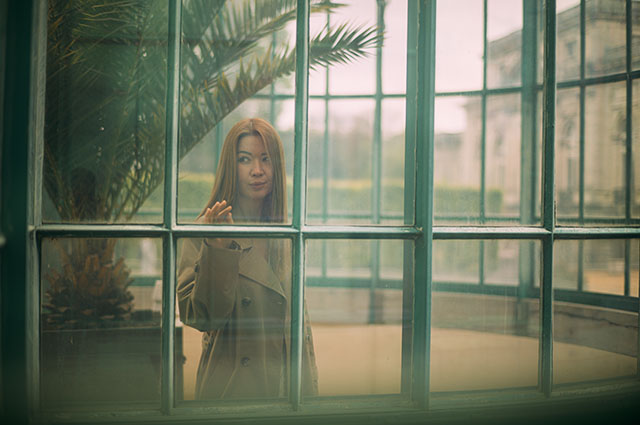
Leica M11-D with Leica 50mm Summilux-M f/1.4 II Reissue 2025. © Milan Swolfs.
The reverse scallop
The reverse scallop focus ring is a distinctive design feature where the grooved parts of the focus ring curve inwardinstead of outward. It is found on certain versions of the Leica 50mm Summilux Pre-ASPH, particularly early Version II models.
This unique design has sparked discussions among Leica collectors and users. Some photographers appreciate its ergonomic feel, as the raised ridges provide a comfortable and precise grip for manual focusing. Others, however, find it less intuitive than the standard scalloped or tabbed focus rings found on later models.
While the reverse scallop Summilux is mechanically and optically identical to other V2 Pre-ASPH lenses, its distinctive focus ring makes it a sought-after piece among Leica enthusiasts and collectors, often adding $2,000 or more to the price of the lens. If you're considering one, it’s worth handling it in person to see if the grip suits your preference.
Version II (Pre-ASPH, 1961–1992) Model 11 114
At first glance, the Version I and Version II Summilux in chrome on brass look fairly identical. However, the most significant upgrade in the V2 is a new optical design, developed by Leica Midland in Canada, which offers noticeable improvements over the first version. Mainly, contrast improved, which was the Midland design philosophy, whereas Wetzlar focused on definition and color correction. Interestingly, Leica did not officially acknowledge this optical redesign until 1966—something that would surely drive today’s Leica enthusiasts crazy.
Compared to contemporary designs like the Planar 1.4/55mm or the Nikon 1.4/50mm, the Summilux easily wins in contrast at maximum aperture, and this alone established its reputation as the finest high-speed lens for full-frame photography—remaining in production for 31 years!
A black version (Model 11 113) was offered in 1962 as a special order. Very few exist.
Some users claim that the V2 introduces more distortion compared to the V1, but after testing both extensively, I haven’t observed this for myself.
The V2 also retains 10 diaphragm blades, ensuring a similar out-of-focus rendering to its predecessor.
Key features:
- Improved optical design
- Same barrel design as Version I until 1965
-
Minimum focus distance: 1 meter
-
Filter size: 43mm
-
Lens shade: Original 12521G or E43 ventilated shade
-
Aluminum barrel for black anodized versions after 1968.
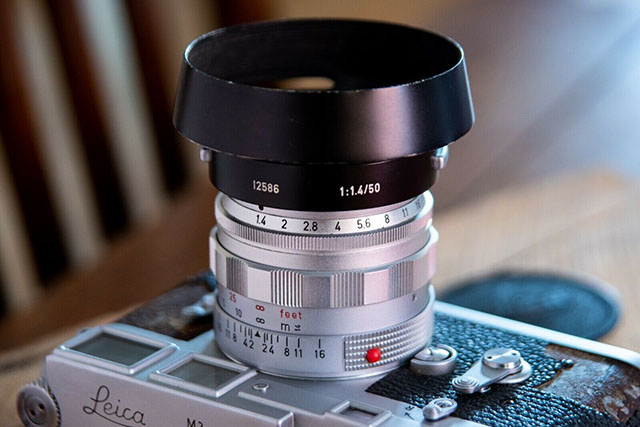
The Leica 50mm Summilux-M ASPH f/1.4 Version II (1962, Model 11114) with ventilated hood (order no 12586) . © Thorsten Overgaard.
Image quality and rendering: Version I vs. Version II
At f/1.4, both Version I and Version II of the Summilux 50mm Pre-ASPH deliver a dreamy, soft rendering with a distinctive glow around highlights. The lower contrast compared to modern lenses contributes to a classic, filmic lookthat many photographers appreciate.
While sharpness improves significantly when stopped down, these lenses are prized not for technical perfection but for their unique character and organic feel.
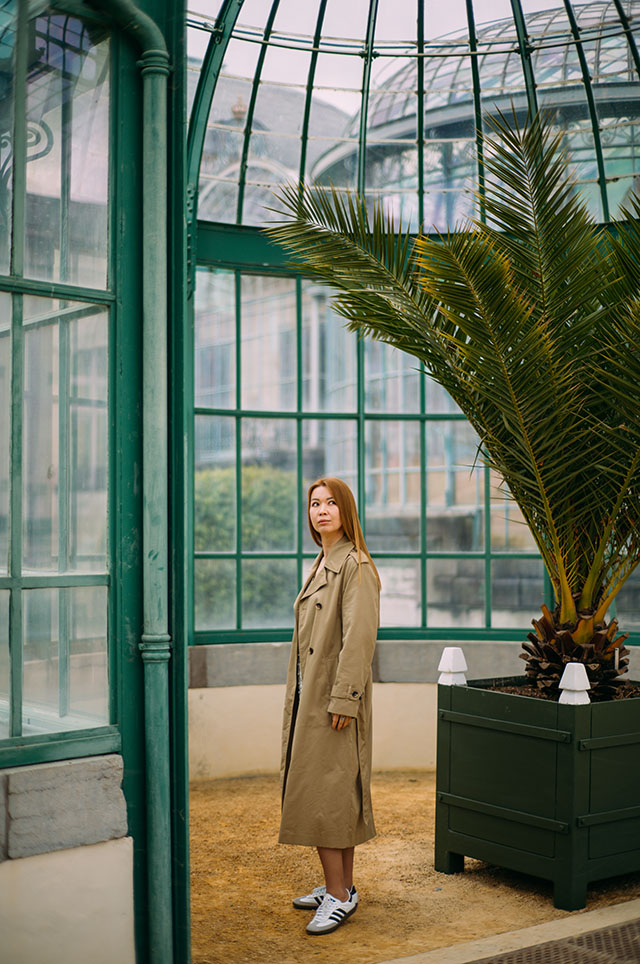
Leica M11-D with Leica 50mm Summilux-M f/1.4 II Reissue 2025. © Milan Swolfs.
Handling and practical considerations
Both versions utilize a bayonet-style hood (model 12521G), which, while effective, can add bulk when attached. Without the hood, the lens remains compact, but some users find the external hood design less convenient than built-in alternatives.
Additionally, the 43mm filter thread may be a factor depending on your lens setup. If you already own other 43mm filter lenses, it’s a seamless fit. However, if your other lenses use 46mm or 49mm filters, you may need step-up rings to maintain consistency in your kit.
The E43 ventilated shade designed by Always Wear A Camera fits on the pre-ASPH lenses, and has an E46 filter thread on the front of the shade so one can attach a 46mm filter on the shade without having to take it off.
The Summilux Pre-ASPH transition model
Between the second and third versions of the 50mm Summilux Pre-ASPH, Leica introduced a transition model that incorporated design elements from both. While it retained the optical formula of the V2, it featured mechanical improvements that foreshadowed the V3, including a more refined focusing mechanism and subtle barrel design changes.
This model is relatively rare and often overlooked, but it represents an interesting evolution in the Summilux lineup, bridging the gap between the classic rendering of earlier versions and the improved handling of later models.
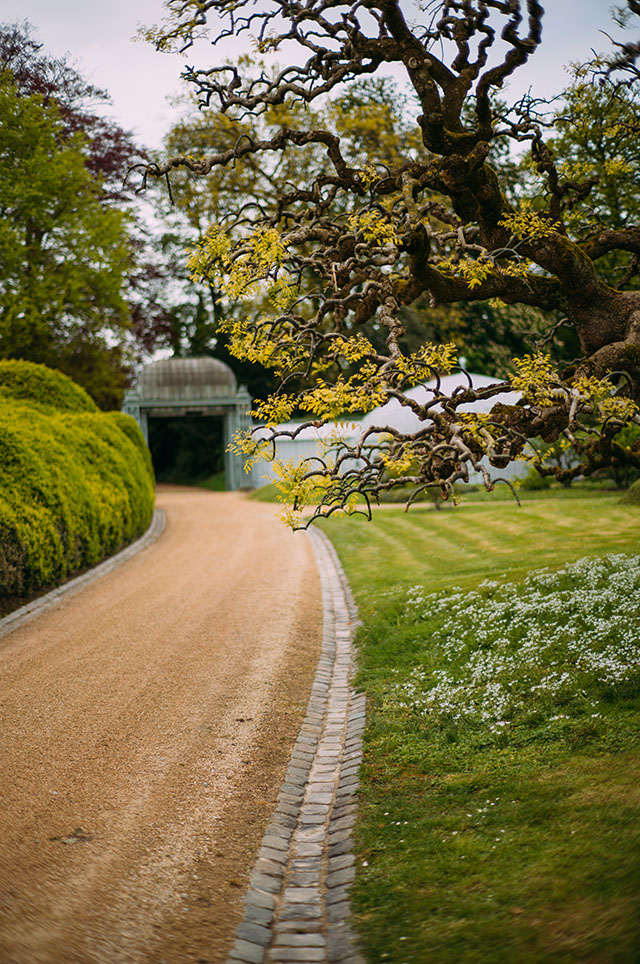
Leica M11-D with Leica 50mm Summilux-M f/1.4 II Reissue 2025. © Milan Swolfs.
Version III (Pre-ASPH, 1992 – 2004) Model 11 856 (Silver) / 11 868 (Black)
The third version of the 50mm Summilux Pre-ASPH maintains the same optical formula as its predecessors but introduces improved mechanics and usability. The most notable change is its ability to focus down to 0.7 meters, compared to the 1-meter limit of V1 and V2. Additionally, the lens barrel design changed and now includes a built-in lens hood.
Key features:
- Minimum focus distance: 0.7 meters
- Filter size: 46mm
- Lens hood: Built-in sliding hood.
Image quality and rendering
Like the previous versions, the V3 Summilux Pre-ASPH maintains a smooth, organic rendering, making it a great choice for portrait photographers. Some users feel it has slightly better contrast and sharpness compared to earlier versions, despite using the same optical formula.
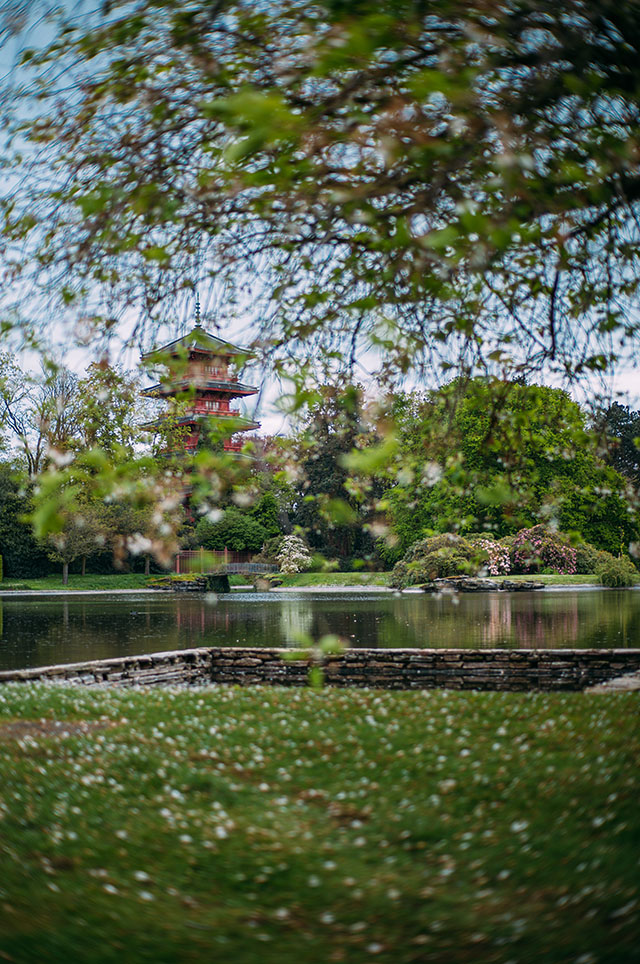
Leica M11-D with Leica 50mm Summilux-M f/1.4 II Reissue 2025. © Milan Swolfs.
Handling and practical considerations
The built-in sliding hood makes this version more compact and practical, though some argue that it’s not very effective. The 46mm filter size makes it more compatible with other modern Leica lenses.
Leica 50mm Summilux Version III Black Paint Millennium Edition
The V3 was released in a limited run of 2,000 black paint lenses in 2000 and is a sought-after collector’s edition.
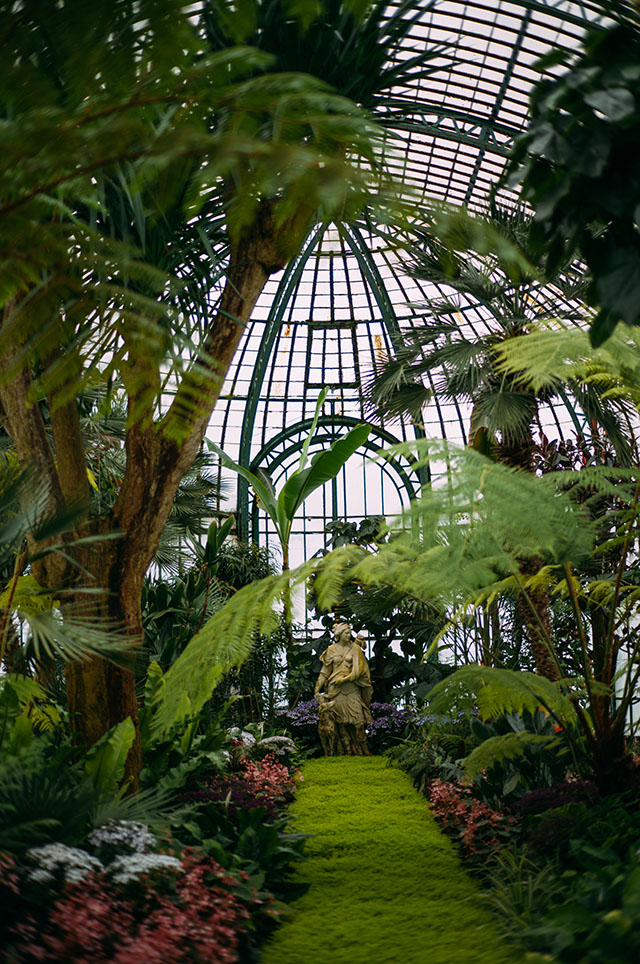
Leica M11-D with Leica 50mm Summilux-M f/1.4 II Reissue 2025. © Milan Swolfs.
| |
|
|
|
| |
The history of Leica 50mm f/1.4 and f/1.5 lenses: |
|
|
| |
By Thorsten von Overgaard.
|
|
Leica 50mm Xenon f/1.5 (1936)
Leica 50mm Summarit f/1.5 (1949)
Leica 50mm Summilux-M f/1.4 I (1959-1960 non-ASPH)
Leica 50mm Summilux-M f/1.4 II (1962, non-ASPH)
Leica 50mm Summilux-M f/1.4 III (1992, non-ASPH)
Leica 50mm Summilux-M f/1.4 III Black Paint Millenium Edition
Leica 50mm Summilux-M ASPH IV f/1.4 (2004)
Leica 50mm Summilux-M ASPH IV f/1.4 LHSA Limited Edition 11627 Black (2005)
Leica 50mm Summilux-M ASPH IV f/1.4 LHSA Limited Edition 11628 Chrome (2005)
Leica 50mm Summilux-M ASPH IV f/1.4 Lenny Kravitz Edition (2015)
Leica 50mm Summilux-M ASPH IV f/1.4 Black Chrome Edition (2016)
Leica 50mm Summilux-M ASPH V f/1.4 Close Focus (2023)
Leica 50mm Summilux-M f/1.4 II (Reissue 2025 of the 1962 non-ASPH version)
Xenon
f/1.5
(Schneider)
Screw
mount
1936-1950
"XEMOO"
|
Summarit
f/
1.5
Screw
mount
1949-1960
"SOOIA"
"SOOIA-M"
11 120
|
Summilux
f/1.4
Version I
Screw mount1960-1963
"SOOME"
M-bayonet mount
1959-1961
"SOOME"
11 114
"SOWGE"
11 014
|
Summilux
f/1.4
Version II
M-bayonet mount
1961-2004
Chrome
11 114
Black
11 113
11 110
|
Summilux-M
f/1.4
Version III
M-bayonet mount
1992-2005
Chrome
11 855
11856
Black
11 623
black anodized
11 868
titan
11 869
(+ a few screw mount editions) |
Summilux-M ASPH (APO)
f/1.4
Version IV
M-bayonet mount
2004-2023
Chrome
11 891
Black
11 891
M-bayonet mount
Vesion V
2023-
Close Focus
Black
11728
Silver
11729
|
Summilux-M ASPH (APO)
f/1.4
Version IV
Black Chrome
Limited Ed
M-bayonet mount
2015-current
Black Chrome on solid brass
limited edition 500 pcs
11 688
|
Summilux
f/1.4
Version II
2025
Heritage
M-bayonet mount
2025 -
Chrome
11 714
|
Serial xxxxxxx
to - |
Serial 491898
to 1546150 |
Serial 1640601
to 1790000 |
Serial 1844001
to 3558910 |
Serial 3588960
to 4011798 |
Serial 3979722
to - |
Serial 4316136 to 431700 |
|
Shade:
XIOOM |
Shade: XOONS |
Shade
12 586
E43 filter |
Shade
12 586
E43 filter |
Built-in shade
E46 filter |
Built-in shade
E46 filter |
Shade
12 586
E43 filter |
Shade
Click-on
E46 filter |
| |
|
|
|
0,7 m - infinity |
0,7 m - infinity
Close focus:
0.45 - infinity |
0,7 m - infinity |
|
7 lenses in 5 groups
|
7 lenses in 5 groups
|
|
7 lenses in 5 groups |
7 lenses in 5 groups
|
8 lenses in 5 groups
This lens is an APO construction. |
8 lenses in 5 groups
This lens is an APO construction. |
7 lenses in 5 groups
12 aperture blades |
| 300g |
320g |
320g black
360g silver |
275g black
380g silver |
275g black
380g silver |
335g black
460g silver |
710g black |
417g silver |
| f/1.5 |
f/1.5 |
f/1.4 |
f/1.4 |
f/1.4 |
f/1.4 |
f/1.4 |
f/1.4 |
| Horace William Lee & Taylor-Hobson |
Otto Zimmermann |
Walter Mandler |
|
|
Peter Karbe |
Peter Karbe |
|
Screw-thread lenses are for Leica II, 250FF, III, 250GG, IIIa, IIIb, IIIc, IIc, Ic, IIIf, If, IIf, If, IIIg, Ig but can be mounted on Leica M bayonet cameras with an adapter.
|
Stay around, get a free eBook
Sign up for the newsletter here and enjoy a free eBook by Thorsten Overgaard.
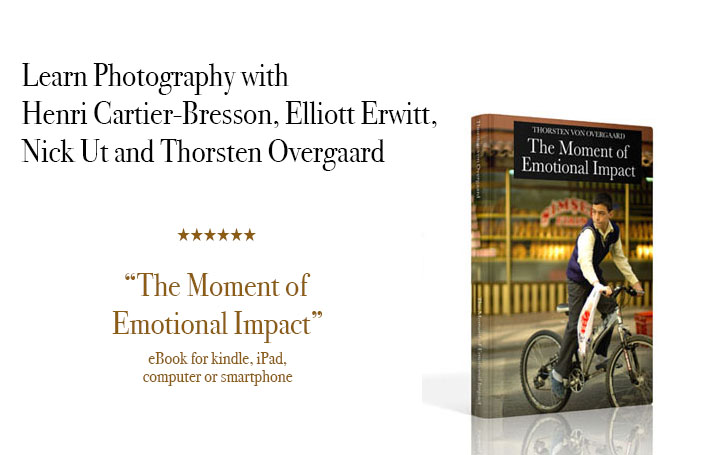
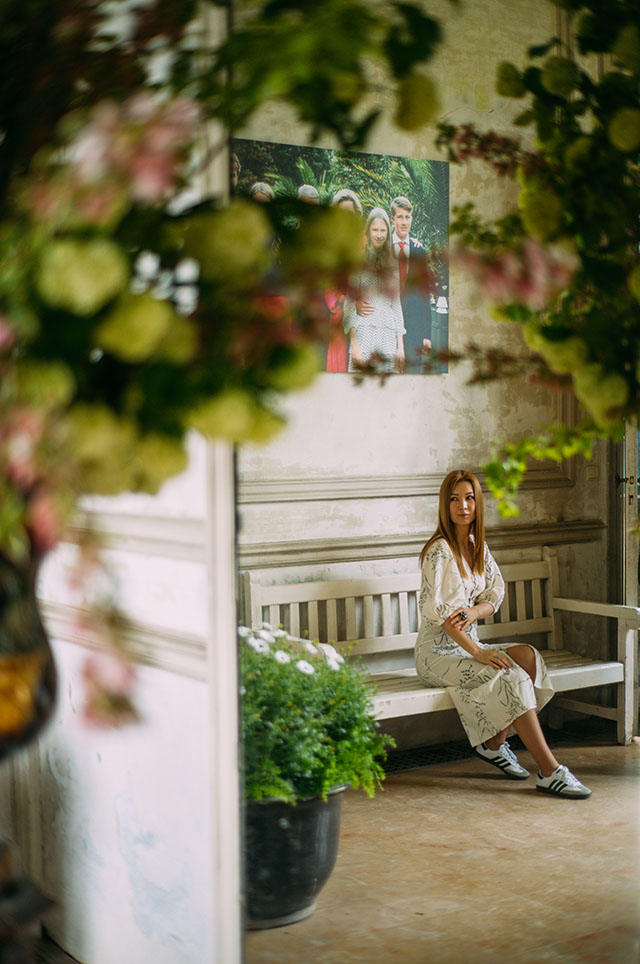
Leica M11-D with Leica 50mm Summilux-M f/1.4 II Reissue 2025. © Milan Swolfs.
Which Leica Lens?
I am a photographer, not a reviewer. I don’t focus on brick wall tests or technical discussions; instead, I judge lenses based on how they perform in real-world shoots. Having used many Leica lenses extensively, I have developed a strong sense of how they fit into the Leica lineup and how they translate into my photography.
Every week, I get questions from social media followers asking which Leica lens or camera they should buy. For a first Leica lens, I often recommend the 50mm Summilux ASPH or the 35mm Summilux ASPH, as they are versatile and well-rounded options.
However, many photographers soon realize that Leica lenses are like paintbrushes—each one offers a different tool for creative expression. I frequently carry multiple focal lengths to a shoot, though I tend to rely on a 50mm for most of my work. Sometimes, I even bring two 50mm lenses because each has a unique look.
For the Leica M11 Monochrom, I often choose the Noctilux f/1.0 or the 50mm Summicron f/2.0 "Rigid", while for color work, I prefer the 50mm Noctilux f/1.2 ASPH. Each 50mm lens has its own distinctive rendering, making lens selection a crucial part of my creative process.
So, why choose the new 50mm Summilux Pre-ASPH II reissue over other Leica 50mm lenses?
During discussions with Murat Akkus, the Product Manager for M lenses, and Christoph Müller, the M Product Manager, it became clear that some Leica shooters—including myself—are looking for a compact, fast lens with character. The Summilux Pre-ASPH was also introduced as an economical option for those who want a fast lenswithout jumping into the Noctilux series.
Initially, when Leica briefed me about this lens, I wasn’t overly excited—I often gravitate toward more obscure lenseslike the 73mm Hektor or the 66mm ELCAN, or rare collector’s pieces like the 35mm Summilux Double ASPH.

Leica M11-D with Leica 50mm Summilux-M f/1.4 II Reissue 2025. © Milan Swolfs.
The difference between this and the original
After testing the 50mm Summilux Pre-ASPH II Reissue, I noticed some key differences between the original and the reissue. The original has more pastel tones, lower contrast, and is slightly softer compared to the reissue. A major limitation of V1 and V2 was the 1m minimum focusing distance, while the new version focuses down to 0.7m. While I rarely need close focusing for my work, this difference can be significant for certain applications.
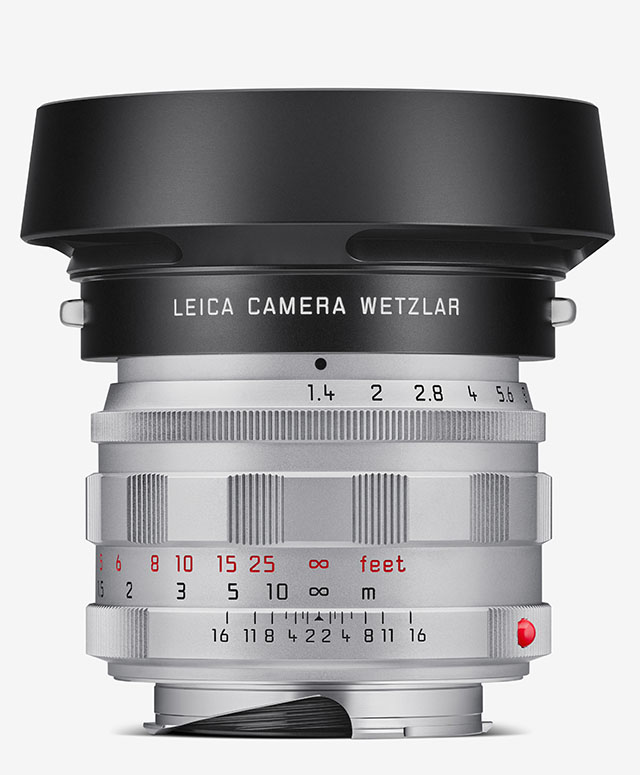
Leica 50mm Summilux-M f/1.4 II Reissue 2025 (Model 11 714). Here with the clip-on ventilated shade.
Performance at f/1.4 and beyond
In terms of sharpness, the new Summilux Pre-ASPH is sharper than the Noctilux 50mm f/1.2 wide open. Even at f/1.4, it holds a noticeable sharpness advantage. The lens also excels in color reproduction, particularly in the greens and reds. I took it to the Royal Gardens in Brussels, and it performed beautifully, capturing lush greens and delicate floral backgrounds with an elegant softness. The skin tones rendered by this lens are particularly gentle and natural, striking a perfect balance between sharpness and softness. Unlike the Noctilux 50mm f/1.2, which some find overly soft, the Pre-ASPH retains just the right amount of detail without becoming clinical.
The lens has a dual character—wide open at f/1.4, it’s dreamy and ethereal, but stopped down to f/2.8, it becomes razor-sharp and highly versatile—making it suitable for a wide range of photographic applications.
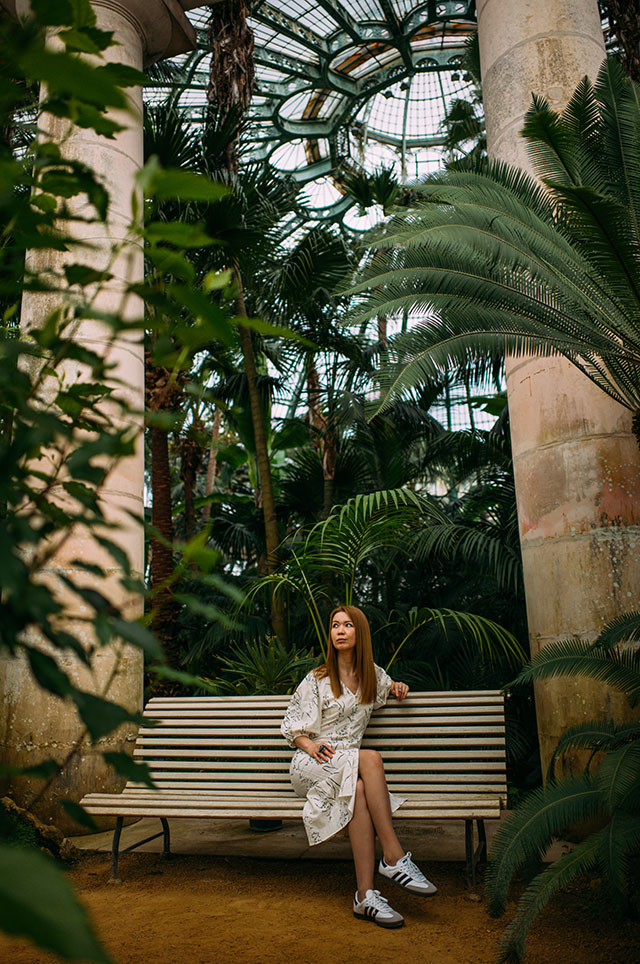
Leica M11-D with Leica 50mm Summilux-M f/1.4 II Reissue 2025. © Milan Swolfs.
The Pre-ASPH excels in bokeh and handling
One of the highlights of this lens is obviously its bokeh. The rendering is creamy and smooth, yet it remains non-distracting and well-controlled. During my field testing, I often felt that it could be the perfect all-in-one lens. It’s neither too heavy nor too large. It focuses close enough for portraits, and it renders backgrounds beautifully. Compared to the ASPH Summilux or the 50mm APO, it has a softer, more organic look, particularly on skin tones.

Leica M11-D with Leica 50mm Summilux-M f/1.4 II Reissue 2025. © Milan Swolfs.
Compared to the 50mm Summilux-M ASPH
Of course, the 50mm Summilux ASPH is a much more modern lens in every way. It offers closer focusing at 0.45m, has less vignetting, higher contrast, and is sharper wide open. A key difference is that the ASPH version also controls chromatic aberrations better, significantly reducing purple fringing, which is more visible on the Pre-ASPH.
Does this make the Pre-ASPH a lesser lens? Absolutely not. The Pre-ASPH Summilux is for the romantics—the portrait photographers like myself who love swirly, pleasing bokeh. It offers a more nostalgic, filmic look that some may prefer over the technically perfect rendering of the Summilux ASPH.
Can this be your only 50mm?
Yes. The Pre-ASPH Summilux has a dual personality—wide open, it’s full of character and atmosphere, but stopped down, it sharpens up beautifully with excellent contrast. It’s a lens that adapts to different needs, making it a fantastic one-lens solution for many photographers.
Can it handle high-resolution sensors?
Many assume that older optical designs struggle with high-resolution digital sensors, but that’s not the case. Every image in this review was shot with the Leica M11-D, proving that the Summilux Pre-ASPH holds up beautifully even on a 60MP sensor. I even printed a portrait of Thais with the Lamborghini Urraco, which was displayed at the Leica Store Beaumarchais during my exhibition "Echoes of Elegance: A Timeless Journey." The details and rendering clearly held up, even in large-format prints.
Like the V1 and V2, the reissue still has some vignetting wide open, which only adds to the lens’s character. By f/2.8, most of the vignetting disappears. Personally, I like a slight vignette—it draws the viewer’s attention to the subject and enhances the overall composition.
In the end, the Summilux Pre-ASPH reissue is an incredibly well-balanced lens, combining the best aspects of vintage rendering with modern usability. Whether you’re drawn to it for its history, its aesthetic, or its unique optical qualities, this lens has something special to offer.
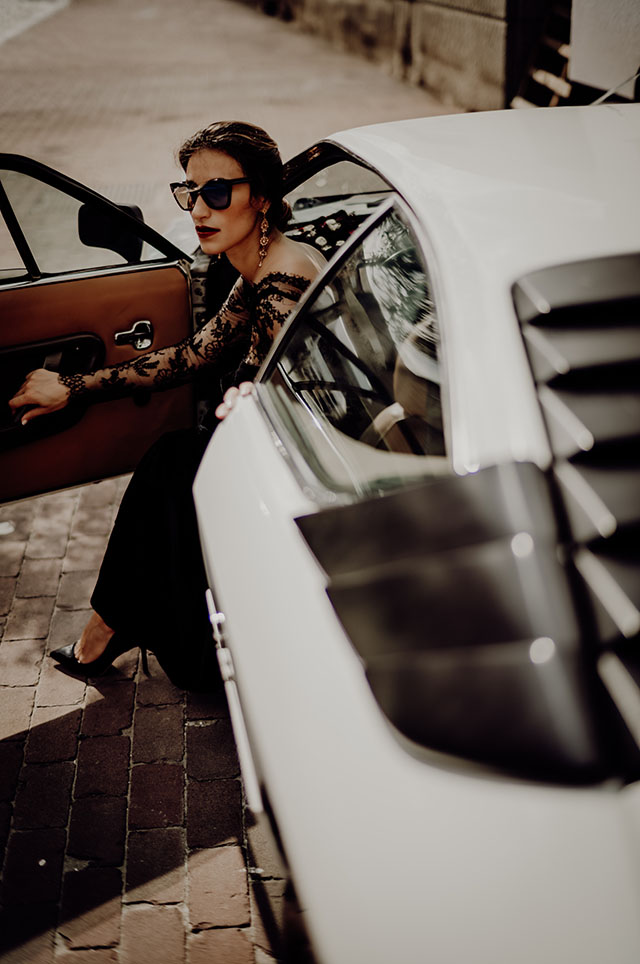
Leica M11-D with Leica 50mm Summilux-M f/1.4 II Reissue 2025. © Milan Swolfs.
Proof of concept
I combined this lens with the Leica M11-D, and although I also own the M11 Monochrom, I found myself strangely attached to using it with the M11-D. The color combination of the sensor of the M11-D and this lens is a match made in heaven. If someone were to ask me, "Milan, if you could pick only one lens for your M?"—this might hit all the spots for me. It has tons of character, but when stopped down, it becomes a high performer. The bokeh is one of the most beautiful I have ever seen, and it is very gentle on skin tones.
Once a year, there is an opportunity to visit the Royal Gardens of the Royal Family in Brussels. It was my second time there, and visitors are even allowed to bring a camera. I followed my usual "one camera, one lens" philosophy, bringing only this lens paired with the M11-D.
The camera brought out some of the most pleasant colors, and the backdrop of flowers and plants resulted in gorgeous bokeh.
The model for the day was my lovely fiancée, who usually assists with lighting but occasionally agrees to pose as well. The smooth tones and natural colors required only minimal editing on the skin. While I have not tested this lens with a Leica M film camera, I can imagine it would pair beautifully with Kodak or Fuji film. The only downside is a bit of purple fringing when shooting wide open, but it’s more controlled compared to the Noctilux f/0.95, which, while a much faster lens, is also an ASPH lens.
For another shoot, I brought the lens into a setting that truly suits my style of photography—combining the model with a rare 1974 Lamborghini Urraco. This car, an often-overlooked gem in Lamborghini’s history, embodies a perfect mix of elegance and raw performance, making it an excellent subject for this lens. The combination of vintage Italian automotive design and the Summilux’s rendering resulted in a series of timeless images.
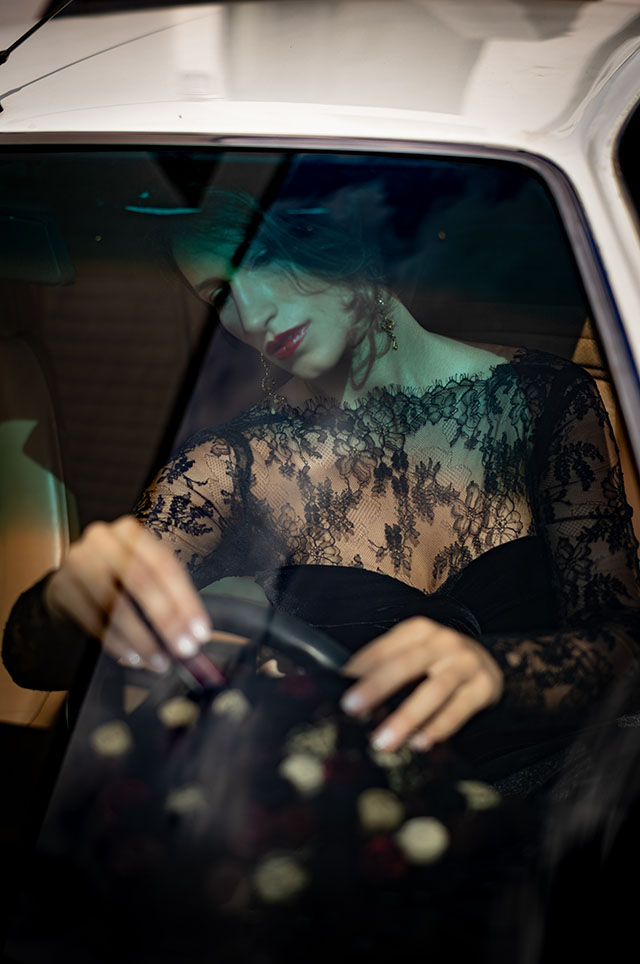
Leica M11-D with Leica 50mm Summilux-M f/1.4 II Reissue 2025. © Milan Swolfs.
While most of the shoot was done using the Medium Format Leica S3, I also had the M11-D with this lens as a backup. The results? The model definitively chose some of the shots taken with this lens. It was easy to focus, allowing me to switch from the fairly heavy Leica S3 to the Leica M11-D, giving my back and shoulders some much-needed rest. One of the advantages of using the M11-D with this lens was its ability to shoot wide open even in full sun and artificial light, thanks to the fast 1/16,000 shutter speed of the electronic shutter.
A specific challenge during this shoot was photographing through the car’s windows. The Leica S3’s autofocus often struggled in such conditions, whereas the M11-D, paired with this lens, made manual focusing a breeze—even with natural sunlight and Harlowe LED lights filtering through the glass.
Overall, this lens exceeded my expectations, proving itself as both a character lens and a high performer when stopped down. It handled beautifully in both natural light and more challenging artificial setups, cementing its place as one of my go-to lenses for my M-series cameras.
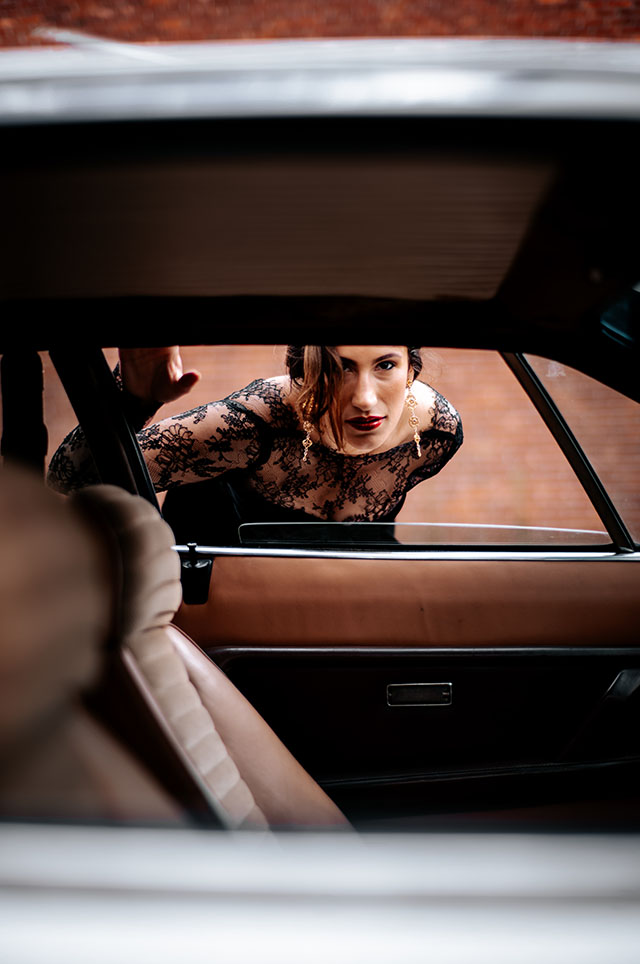
Leica M11-D with Leica 50mm Summilux-M f/1.4 II Reissue 2025. © Milan Swolfs.
Final thoughts – A worthy addition?
So, who should buy this lens? If you love classic Leica rendering but want modern usability, the new Leica 50mm Summilux Pre-ASPH is an excellent choice. It offers a unique balance—dreamy at f/1.4, razor-sharp at f/2.8—making it an ideal all-in-one 50mm.
Would I personally buy it? Absolutely. It’s a fantastic lens that blends vintage charm with modern precision—exactly what I look for in a Leica lens.
Through the archive’s lens: A glimpse into Leica’s legacy
At the beginning of this review, I mentioned a few of my favorite lenses—each with its own story, character, and place in Leica’s rich history. As for what’s next in the heritage line, only time will tell.
For those with a passion for Leica’s past, the Leitz Park archive is a treasure trove of extraordinary pieces, where some of the most special and storied lenses can be seen and appreciated. It's a place where history comes alive, offering a rare glimpse into the evolution of Leica’s craftsmanship. Of course, this is merely a reflection, not a suggestion of future plans. But isn’t it wonderful to dream?
– Milan Swolfs
| |
|
|
| |
About Milan Swolfs
Milan Swolfs is a fine art portrait photographer born in Antwerp, Belgium, renowned for his exquisite visual signature in the burlesque and vintage styles. His work captures the timeless Hollywood glamour of the 1920s and 1930s, showcasing both women and men in bold, confident expressions with a delicate and glamorous touch.
Milan began his career photographing the biggest burlesque events in Europe before shifting his focus to fine art photography. An ambassador for Leica Camera, Milan's work has been published in LFI (Leica Fotografie International), Medium Format Magazine, and Viewfinder. He held his first solo exhibition, Light of Seduction, at the Leica Store in Porto in 2022. From the end of 2024 until January 2025, Milan had the privilege of presenting his new work at the Leica Store Beaumarchais in Paris at the exhibition Echoes of Elegance: A Timeless Journey.
Milan’s portraits are artistic celebrations of individuality and classic beauty, evoking the charm and allure of a bygone era.
Website: www.milanswolfs.com
Instagram: @milanswolfsphotography |
|
| |
|
|
| |
|
|
| |
Special thanks to Christoph Mueller and Murat Akkus from Leica Camera for their support and great conversations. A huge thank you to my fiancée Aliya for letting me take her shots, having the patience for my gear reviews, and tolerating me bothering her to pose. And finally, a big thank you to Thais for the amazing shoot we did—couldn’t have asked for a better collaboration! |
|
| |
|
|
Thorsten Overgaard Leica photography books
Enjoy some of the inspiring books by Thorsten Overgaard. See the overview here, or simply start with one of the bessellers, "A Little Book on Photography"
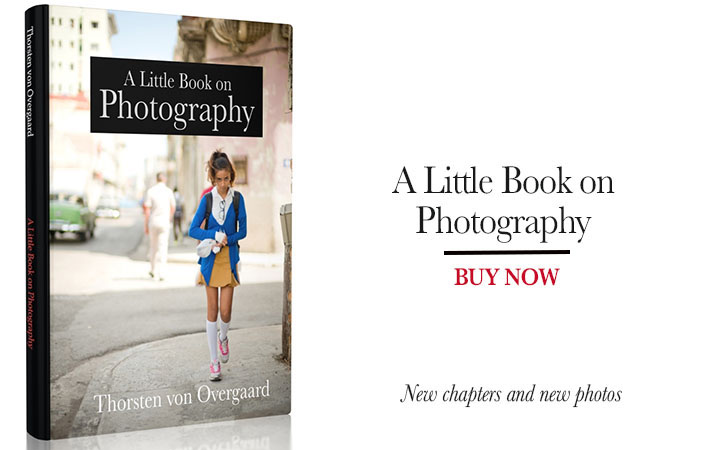
More to come
Bon voyage with it all.Sign up for the newsletter to stay in the know. As always, feel free to email me with suggestions, questions and ideas. And hope to see you in a workshop one day soon.
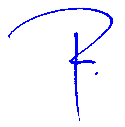
Thorsten Overgaard
What did Jono say?
Read the review of the Leica 50mm Summilux-M II reissue by Jonathan Slack here:
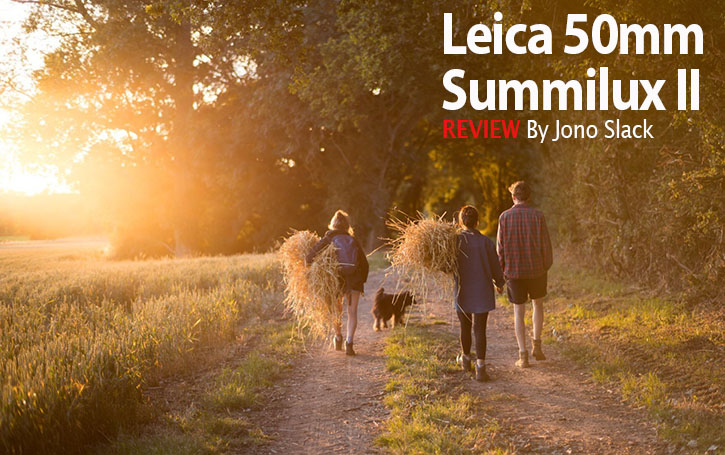
Read more about 50mm Summilux
Read more about Leica 50mm Summilux editions, invluding the Version IV and Version V in Thorsten Overgaard's review here:
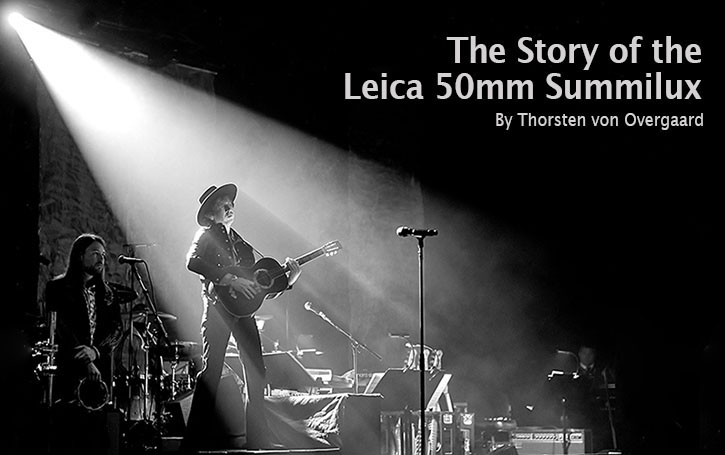
Read all about the 50mm Summilux editions, including why the Version IV is fundamentally an APO lens, even it doesn't say so.l
| |
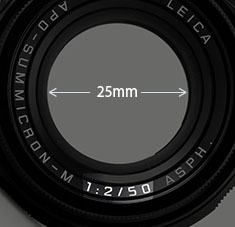 |
| |
1:2/50 the description says. But what does it mean? |
| |
|
1: - Basically means 1 divided with. But why is it on the front of the lens? If you look close, a lens will often say 1:2/50mm on the front, meaning it is a 50mm lens with an f/2.0 apterture. The 1: itself is a ratio, that indicates that the aperture diameter (25mm) is the ratio of 50mm divided with 2.
It's a strange way of writing product information on modern products, but here's how it's right:
a) A lens is called a 50mm lens because there is 50mm from the sensor to the center of focus inside the lens.
b) A lens is f/2.0 when the widest opening is 50mm divided with 2 = The lens opening is 25mm in diameter at it's widest. Had it been an f/2.8 lens (1:2.8/50), the widest aperture opening would be 50mm divided with 2.8 = 17.8mm.
AEL = Auto Exposure Lock. This is a function that can be used when you want to reframe the scene, but keep the current exposure from changing. By default the Leica Q locks both Exposure and Focus when you press the release button half down.
AFL = Auto Focus Lock. This is a function that can be used when you want to reframe the scene, but keep the current focusing from changing. By default the Leica Q locks both Exposure and Focus when you press the release button half down.
AF = Auto Focus. The idea is that the camera does the focusing itself (the word auto comes from Greek "self").
AF Assist Lamp = The little red lamp on the front of the Leica Q that will light up in dark places so as to help the Auto Focus to see in the dark. If you put a hand in front of the lens and press the shutter release button you can see it in action.
Aperture = The f/ stop on the camera that regulates how much light passes through the lens. On a f/1.7 lens the lens is fully open" at f/1.7. At f/2.0 the aperture inside the lens make the hole through the lens smaller so only half the amount of light at f/1.7 passes through. For each f/-stop (4.0 - 5.6 - 8.0 - 11 - 16) you halve the light. The aperture of the lens is basically the focal length divided with the f/-stop = size of the hole (28mm divided with f/1.7 = the hole is 45 mm).
ORIGIN: Late Middle English : from Latin apertura, from apert- ‘opened,’ from aperire ‘to open’.
| |
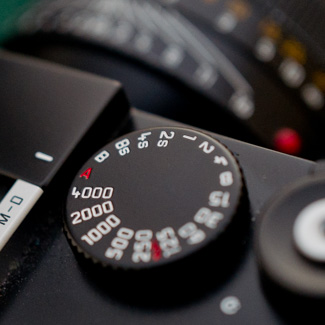 |
| |
The camera in Aperture Priority Mode |
| |
|
Aperture Priority Mode. When the shutter speed dial on top of a Leica camera is set to A, it is short for “Aperture Priority” and allows the user to set a specific aperture value (f-number) while the camera selects a shutter speed to match it that will result in proper exposure based on the lighting conditions as measured by the camera's light meter. In other words, you set the aperture as priority (f/1.4 for example), and the camera calculates a shutter speed (1/250 of a second) that matches that. If you change the aperture to f/2.0 by changing the aperture ring on the lens, the camera will re-calculate the speed to 1/125 so as to get the same amount of light to hit the sensor (f/2.0 is half the light through the lens as f/1.4 and 1/125 if twice the amount of light on the sensor as 1/250).
| |
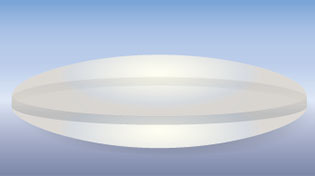
spherical (ball) |
| |
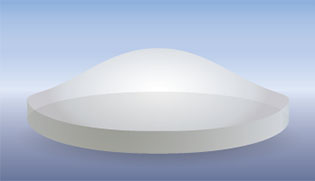
a-spherical (non-ball) |
| |
|
ASPH = (Aspherical lens) stands for "aspheric design".
Most lenses have a spherical design - that is, the radius
of curvature is constant. These are easy to manufacture by
grinding while "spinning" the glass. This design
however restricts the number of optical corrections that can
be made to the design to render the most realistic image possible.
ASPH lenses (a-spherical, meaning non-spherical), however, involve usually 1 element that does
*not* have a constant radius of curvature. These elements
can be made by 1) expensive manual grinding, 2) molded plastic,
or 3) Leica's patented "press" process, where the element
is pressed into an aspherical ("non-spherical")
shape. This design allows Leica to introduce corrections
into compact lens designs that weren't possible before. Practically,
the lens performs "better" (up to interpretation)
due to increased correction of the image, in a package not
significantly bigger than the spherical version.
There is another Aspherical lens manufacture technique: an uneven coating layer is applied to a spherical lens. The coating is thicker on the edges (or on the center, depending). Canon "Lens Work II" calls these "simulated" aspherical lenses. Simulated and Glass-Molded (GMo) asphericals show up in non-L Canon lenses, while the L lenses have actual ground aspheric elements.
A- means non, or without. From Latin, ex.
Sphere: ORIGIN Middle English : from Old French espere, from late Latin sphera, earlier sphaera, from Greek sphaira "ball".
| |
|
|
 |
| Normal spheric lens (grinded) |
|
ASPH (note the shape of the glass as result of pressing rather than grinding) |
Auto- means “self”. The idea is that when a camera has auto-(something), it does that (something) by itself.
Banding = Noise in digital images. Horizontal lines in a horizontal picture (if the camera is in portrait mode/vertical, the lines will obviously be vertical). It's simply noise; the result of uncontrolled algorithms working overtime with an image the sensor really can't see because it's very dark. (If your image has vertical lines in it, it is more likely that the sensor needs remapping).
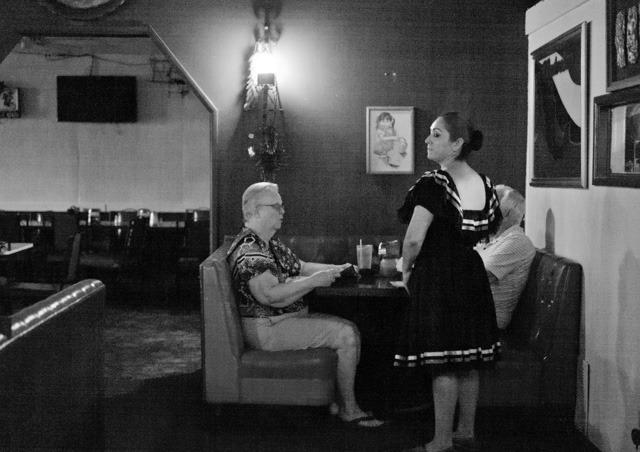
This image at 6400 ISO, underexposed and then brought up to correct exposure in Lightroom, displays banding: Horizontal lines in the image. Leica M-D 262 with Leica 50mm APO-Summicron-M ASPH f/2.0.
Base ISO = The ISO the digital sensor was born with. Even a digital sensor goes from say 50 ISO to 25,000 ISO, it only has one base ISO. Any other setting is an algorithm that figures out how the image whould look if there was 64 times more light, or half the light, etc.
When you go down from Base ISO (for example 200 to 100 ISO), you can expect a
decrease in quality. When you go up, the decrease is much less. For some sensors, you loose 2-3 stops by going down 1 step in ISO, but can go 8 steps up and only loose 1 stop in dynamic range. Basically, your ISO range should be from Base ISO and as far up as you can, before you see visible decrease in quality (mostly 3200 ISO - 6400 ISO).
Base ISO for Leica M9 is 160 ISO, for Leica M240 it is 200 ISO. For Leica M10 it is around 160 ISO. For Leica M Monochrom it is 320 ISO. For Leica Q and Leica Q2 it is around 100 ISO. For Panasonic Lumix S it is 200 ISO. For most Canon cameras the base ISO is around 100, for most Nikon cameras it is around 200 ISO.
Bokeh = The visual quality of the out-of-focus areas of a photographic image, especially as rendered by a particular lens: It's a matter of taste and usually photographers discuss a 'nice' or 'pleasant' bokeh (the out-of-focus area is always unsharp, which is why the quality discussed is if one likes the way it renders or not by a particular lens). The closer you get to something, the 'more' bokeh' you get (in that the focus becomes less for the background and foreground at close distances than at long distances). ORIGIN from Japanese 'bo-ke' which mean 'fuzzines' or 'blur.'.
 Bokeh: The visual quality of the out-of-focus areas of a photographic image. Photo at Bar del Fico in Rome. Leica TL2 with Leica 35mm Summilux-TL ASPH f/1.4. © 2017 Thorsten Overgaard. Bokeh: The visual quality of the out-of-focus areas of a photographic image. Photo at Bar del Fico in Rome. Leica TL2 with Leica 35mm Summilux-TL ASPH f/1.4. © 2017 Thorsten Overgaard.
Camera - is today’s short name for Camera Obscura (meaning “a dark room”). Camera means Chambre and was used only as a Latin or alien word, actually only for Spanish soldiers’ rooms, until popularized in connection with photography in 1727: “Camera Obscura”. In 1793 the slang term “camera” was used by Sterne Tr. Shandy: “Will make drawings of you in the camera” and by Foster (1878), “The eye is a camera”. Camera Obscura was described by Iraqi scientist Ibn-al-Haytham in his book, “Book of Optics” (1021) and by Leonardo da Vinci in 1500; popularized and made widely known in 1589 by Baptista Porta when he mentioned the principle in his book “Natural Magic”. Johannes Kepler mentions Camera Obscura in 1604.
Camera = chambre (room), Obscura = dark (or cover).
| |
|
|
| |
Why is it called a "camera"..?
The word Camera is today's short name for Camera Obscura (which originally means “a dark room”).
Origin of the word Obscura means "dark" or "covered", and the word Camera means Chambre and was used originally only as a Latin or alien word, actually only for Spanish soldiers' rooms, until popularized in connection with photography in 1727: “Camera Obscura”.
In 1793 the slang term “camera” was used by Sterne Tr. Shandy: “Will make drawings of you in the camera” and by Foster (1878), “The eye is a camera”.

Ibn-al-Haytham mentioned Camera Obscura in his "Book of Optics" in 1021.
The concept of Camera Obscura was described by Iraqi scientist Ibn-al-Haytham in his book, “Book of Optics” (1021) and by Leonardo da Vinci in 1500; popularized and made widely known in 1589 by Baptista Porta when he mentioned the principle in his book “Natural Magic”. Johannes Kepler mentions Camera Obscura in 1604.
Camera = chambre (room), Obscura = dark (or cover). |
|
| |
|
|
C = Continuous shooting. In the menu of the Leica Q2 under the menu point Continuous Shooting you can define if the Continuous should be Low (3 fps), Medium (5 fps) or High (19 fps).
Central Shutter = Some lenses, for example the Leica S lenses and the Leica Q where a shutter is located in the lens itself. In most cameras there is a shutter curtain just in front of the sensor, and in SLR (Single Lens Reflex) cameras there is also a mirror in front of the shutter curtain.
In the Leica T/TL/TL2 the shutter is in front of the sensor, but only acts to "refresh" the sensor. In the Leica TL2, there is a mechanical shutter curtain from 30 sec. to 1/4000 shutter times, and digital shutter from 1/4100 to 1/40,000 shutter times. A digital shutter is simply "turning on/off the recording of the sensor.
CMOS sensor (as used in Leica CL, Leica T/TL/TL2, Leica M 240, Leica M Monochrom Typ 246, Leica S Typ 007, Leica SL, Leica Q, Leica Q2, Leica M10, Leica X, Leica D-Lux, etc.) = (Complimentary Metal Oxide Semiconductor) chips use transistors at each pixel to move the charge through traditional wires. This offers flexibility because each pixel is treated individually. Traditional manufacturing processes are used to make CMOS. It's the same as creating microchips. Because they're easier to produce, CMOS sensors are cheaper than CCD sensors. CMOS allow Live View and use less energy than CCD.
Contrast - The degree of difference between tones in a picture. Latin contra- ‘against’ + stare ‘stand.’
CS = Central Shutter = As in the Leica S lenses for the Leica S where a shutter is located in the lens itself. In most cameras there is a shutter curtain just in front of the sensor, and in SLR (Single Lens Reflex) cameras there is also a mirror in front of the shutter curtain.
In the Leica Q and Leica Digilux 2 the shutter is in the lens which makes the camera mirrorless as well as very quiet because there is not a metal shutter curtain going up and down in front of the sensor.
Depth - Distance between front and back. Distance from viewer and object.
Digital Zoom = Refers to zooming in on a scene digitally. All that happens is that the camera zooms into the area of the sensor and records only that. The quality will be less as it's a smaller part of the same recording. Zoom is originally used for an optical zoom lens where optics move inside the lens so as to enlarge the subject optically. This does not reduce the image quality/resolution the same way as digital zoom does. Generally, digital zoom can be performed on any picture later in the computer as it's in essence simply a crop.
In the Leica Q Digital Zoom refers to the possibility to change the crop from 28mm to 35mm or 50mm (and for the Leica Q2, 75mm as well). Choosing a different "digital zoom" simply shows frame lines for the chosen focal length in the EVF and in the final image (that is in fact the full 28mm frame), there is a pre-selected crop for the chosen frame when you open the image in Lightroom or Capture One Pro.
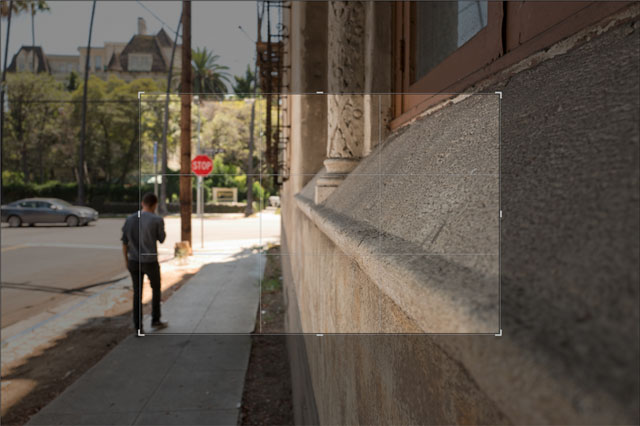
Digital zoom is in essence a crop of the image to make the scene appear closer. © 2017 Thorsten Overgaard.
Digital Shutter = A digital shutter is simply "turning on/off the recording of the sensor. In the "old days" this had to be done with an actual mechanical shutter curtain; a metal curtain in front of the sensor (or film) that goes up for 1/125th of a second, for example. In the Leica TL2, there is a mechanical shutter curtain from 30 sec. to 1/4000 shutter times, and digital shutter from 1/4100 to 1/40,000 shutter times.
DIS = Digital Image Stabilization. This is a feature often offered in video recorders and some times for tele lens still photography (so as to avoid motion blur when the lens is moving during slow shutter speeds).
| |
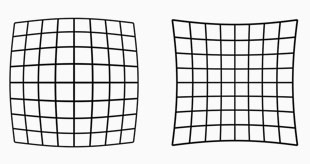 |
| |
Lens distortion looks like this. The lines are not straight. Our eye uses distortion correction. Lens designers can design lenses so they have very little distortion, or they can make less complicated lens designs and "fix" the distortion in software. |
| |
|
Distortion = In photo optics/lenses: When straight lines in a scene don't remain straight because of optical aberration.
Lens designers can correct for distortion to a degree so the whole image field is perfect corrected and all lines remain straight. In modern lens design many designs rely on Software Distortion Correction (SDC).
The eye adjusts for distortion so we always see vertical and horizontal lines straight when we look at things. Even when you get new prescription glasses (if you use such), you will often experience distortion in your new glasses. After a few days they eyes have adjusted for the glasses and the distortion you saw to begin with is now gone. Software Distortion Correction (SDC) is far behind what the human eye can perform of adjustments. (Also see my definition on Perspective for more on the eye and optics)
DNG = Digital Negative, an open standard developed by Adobe. It is a single file that contains the raw image data from the sensor of the camera as well as date, time, GPS, focal length, settings, etc.
The alternative is a RAW file + XLM file where the RAW file contains the image information and the XML contains the rest of information about where, how and when the picture was taken.
A Camera Raw profile (that is specific for that camera) in the computer helps the software program, for example Adobe Lightroom, to translate the RAW data into the image.
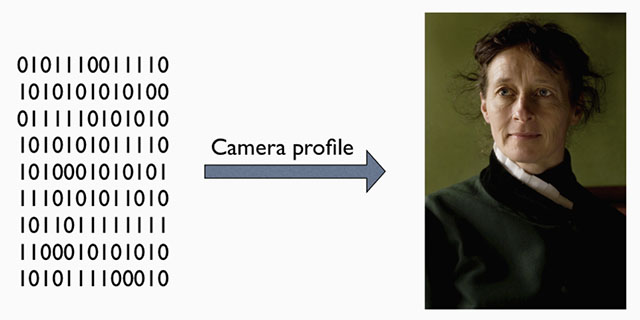
A raw file (or DNG) is simply the full recording of digital data (1's and 0's) from the sensor. In the computer, the sensor data is translated into the exact colors, via a camera profile.
DOF = Depth of Field. This is how much of the image will be in focus or "acceptable sharp". The DOF is determined by the subject distance (the farther away, the larger area is sharp; the closer the focus is, the less of the lage is sharp), the lens aperture (the depth of field is narrow at f/1.4 and larger at f/5.6) and the focal length of the lens (tele lenses has very narrow depth of field whereas wide angle lenses has a wide depth of field) and film or sensor size (small-sensor cameras has a wide depth of field wheras medium format or large format cameras has a very narrow depth of field). As an example, a Leica 21mm Super-Angulon-M f/3.4 lens is sharp all over the focus field from 2 meter to infinity when set at a distance of 3 meters at f/3.4. The DOF scale measurement on top of the Leica lenses shows lines for each f-stop that indicates from which distance to which distance the image will be sharp. Shallow DOF is a generally used term in photography that refer to lenses with very narrow focus tolerance (which can be used to do selective focus; making irrelevant subjects in the foreground and background blurry so only the subjects of essence are in focus and catches the viewers eye).
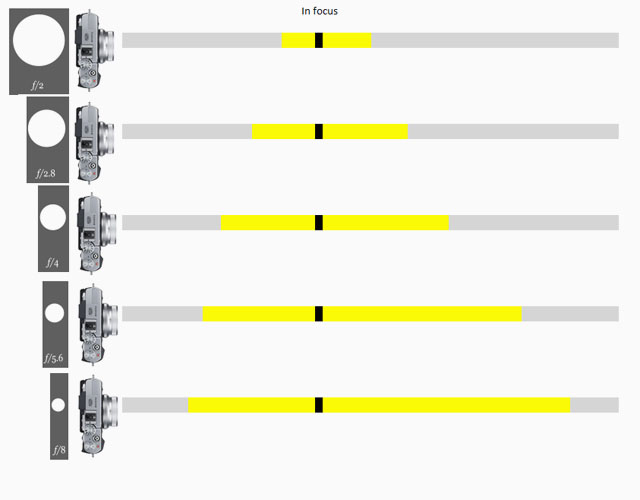
Depth Of Field scale from Fujifilm.
Dynamic range. The grade of ‘contrast range’ (or number of tones) a film or sensor, or simply a photograph, possess between bright and dark tones. The human eye is said to have a dynamic range of 10-14 ‘stops’ (but because we scan area by area and compile a concept of the overall scene, they eye is often thought to have a much higher dynamic range), Film used to have 7-13 ‘stops’ and some modern sensors have up to 15-17 ‘stops’.
EVF = Electronic ViewFinder. A viewfinder where you look at a small screen through optics/prisms. The advantage is that you see what the sensor sees.
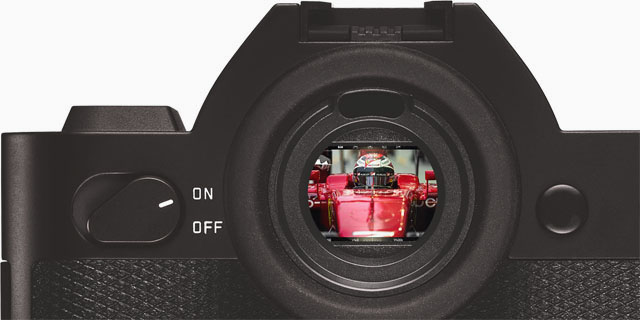
The EVF (Electronic Viewfinder) on the Leica SL 601.
Exposure Bracketing = The possibility to set the camera to automatically record a series of images where the exposure is above and below what the camera measures. The idea is that at least one of the images will be correctly exposed.
f/ (f-stop, also known as aperture).
f- (focal length). Often given in mm, for example 90mm. In the past they were often given in cm or inch, for example 9.5 cm or 3.2 inch.
f-stop = the ratio of the focal length (for example 50mm) of a camera lens to the diameter of the aperture being used for a particular shot. (E.g., f/8, indicating that the focal length is eight times the diameter of the aperture hole: 50mm/8 = 6,25 mm); or the other way around, the hole is the focal length divided with 8).
ORIGIN early 20th cent.: from f (denoting the focal length) and number.
One f-stop is a doubling or halving of the light going through the lens to the film, by adjusting the aperture riing. Adjusting the f-setting from f 1.4 to f.2.0 is halving the light that goes through the lens. Most Leica lenses has half f-stops to enable the photographer to adjust the light more precicely.
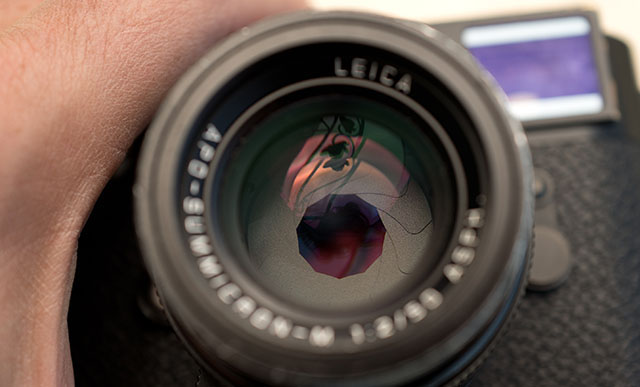 The aperture blades inside the lens is clearly visible in this photo by Eolake Stobblehouse. The aperture blades inside the lens is clearly visible in this photo by Eolake Stobblehouse.
Flare = Burst of light. Internal reflections between (and within) lens elements inside a lens. Mostly, flare has a characteristic "space travel" look to it, making it cool. Particularly in older lenses with less or no coating of the glass surfaces to suppress this, it can be a really cool effect. In newer lens designs, the coatings and overall design try to suppress flare and any reflections to a degree, so that there is seldom any flare to be picked up (moving the lens to pick up a strong sunbeam), but instead a "milking out" (or "ghosting") of a circular area of the frame; meaning simply overexposed without any flare-looking flares.
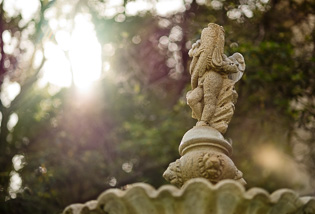 |
|
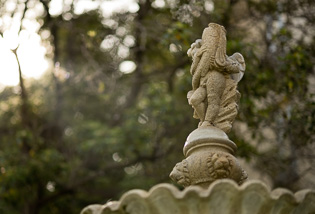 |
Sunlight creating (fairly supressed) flare in the bottom right quadrant of the image of a modern lens. |
|
The camera moved slightly to avoid the flare. |
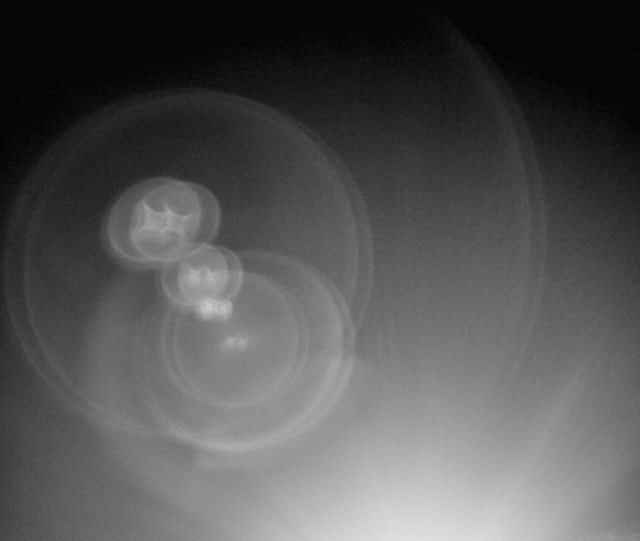
Older lenses with less coating, or without coating, are known to create flare that can look like this (Leica 50mm Summicron-M f/2.0 II Rigid model from the 1960's). © Thorsten Overgaard.
|
Fn = Short for Function. It's a button you can program. In the Leica Q it is by default set to be White Balance, so when you press it, you can choose which White Balance setting you want. You can press again and another function comes up. To complicate matters more, you can program the FN button to your own likes.
| |
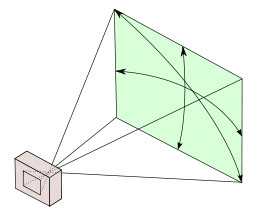 |
| |
A 28 mm lens has a 74° viewing angle |
| |
|
Focal length = On the Leica Q it is 28mm and originally referred to the distance from the sensor (or film in older days) to the center of focus inside the lens. Nobody uses that measurement, except those who construct lenses! For users of lenses, focal length refers to how wide the lens sees. The viewing angle, which is often given in for example 90° viewing angle for a 21mm lens, 74° viewing angle for a 28mm lens, 6° viewing angle for a 400mm lens, etc.
Each human eye individually has anywhere from a 120° to 200° angle of view, but focus only in the center.
Focus, in - Sharp and clear in appearance. Focus - “The burning point (of a lens or mirror)”. In Latin the word focus meant fireplace or hearth. The word was probably first employed outside of its Latin literal use as “the burning point of a lens or mirror” in optics, and then came to mean any central point. The German astronomer Johannes Kepler first recorded the word in this sense in 1604.
Full Frame (FF) = The size of the sensor is 24 x 36mm which is the format Oskar Barnack and Leica Camera AG invented with the first Leica that was introduced in 1925. Many other formats invented since, such as APS, APS-C and all usually refer to Full Frame ratio, by which it means what size they have compared to Full Frame.
| |
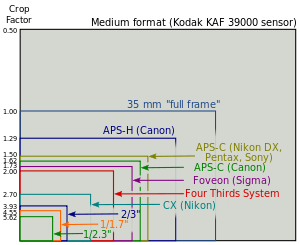 |
| |
Full Frame is "king of photography" |
| |
|
The 24 x 36mm Full Frame format is so "king of photography" that it has continued to be the ideal for all cameras. Besides this, there exists Large Format cameras such as 4x5" (100 x 125 mm) and Medium Format 6x6 (60 x 60mm amongst other sizes in that area).
Hue = A color or shade depending on the dominant wavelength of red, green or blue. The word Hue comes from Swedish hy which is "skin complexion". It is independent of intensity, so often (in computer editing programs for example), Hue is an adjustment along Saturation which is (intensity of color as compared to white).
ISO = Light sensitivity of the camera sensor is given in ISO (International Organization for Standardization). It's a standard that was used in film and is now used in all digital cameras also. The base ISO for the Leica Q sensor is 100 ISO which means that this is what the sensor "sees". All other levels are computer algorithms calculating the effect as if the sensor could "see" more (hence noise at higher ISO levels).
ISO goes in steps of doubling: When the ISO is raised from 100 ISO to 200 ISO, the camera only need half the amount of light to make a picture. For each step in ISO to 400, 800, 1600, 3200, etc the light sensitivity is doubled for the sensor (and the camera sensor only need half the light of the previous ISO to record the same image).
JPEG = A standard for picture format made in the 1990's by Joint Photographic Experts Group). Mostly referred to as JPG as in L1003455.JPG which would be the name for a JPG file from the camera.
Summilux = Refers to the maximum lens aperture - normally f1.4 , "-lux" added for "light" (ie. the enhanced light gathering abilities). In the Leica Q the lens is a Summilux even it is a f/1.7 and not f/1.4.
| |
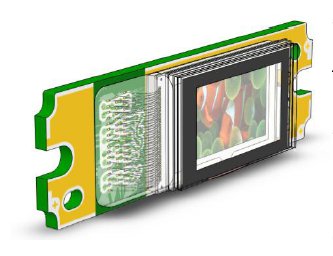 |
| |
LCoS display |
| |
|
LCOS (viewfinder screen in the Leica Q and Leica Q2) = Liquid crystal on silicon is a high-quality method for near-eye displays, better than LCD (Liquid-crystal display). There are two broad categories of LCoS displays: Three-panel and single-panel. In three-panel designs, there is one display chip per color, and the images are combined optically. In single-panel designs, one display chip shows the red, green, and blue components in succession with the observer's eyes relied upon to combine the color stream.
Leica = A compound word derived from " (Lei)tz" and "(ca)mera". Apparently they were originally going to use "LECA", but another camera company already used a similar name in France, so they inserted the 'i' to prevent any confusion.
Lens hood = (also called a Lens shade). A tube or ring attached to the front of a camera lens to prevent unwanted light from reaching the lens and sensor. In the past where lenses were not coated to prevent internal reflections inside the lens, the lens hood was often essential. These days where lenses are coated, the shade serves just as much as decoration and protection (bumper) as well.
ORIGIN Old English hod; related to Dutch hoed, German Hut 'hat,' also to hat.
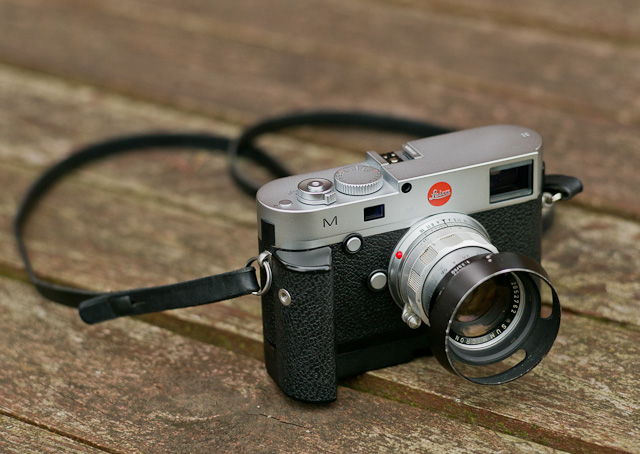
Lens hood or Lens shade attached to the front of the lens to prevent light rays from the side to hit the optics, which could introduce unwanted light and hence reduce contrast of the image. These days where lenses are coated, the shade serves as decoration and protection as well.
Level Gauge = This is a tool in the viewfinder to see if you hold the camera 100% horizontal and/or vertical. You can turn it on in the Menu > Photo Live View Setup > Level Gauge > On.
Light = Tiny particles called photons that behaves like both waves and particles. Light makes objects visible by reflecting off of them, and in photography that reflecting off of subjects is what creates textures, shapes, colors and luminance. Light in its natural form (emanating from the sun) also gives life to plants and living things, and makes (most) people happier. So far, nobody has been able to determine exactly what light is. The word photography means “writing with light” (photo = light, -graphy = writing). Read more about light in my book Finding the Magic of Light.
Live View = This is the ability to see the image the sensor see, live, via the screen of a digital camera, or via an electronic viewfinder (EVF).
MACRO = Macro lens. The Leica Q2 lens can be turned to Macro which enables you to go close so as to enlarge smaller subjects. The word macro comes from Greek makros ‘long, large.’
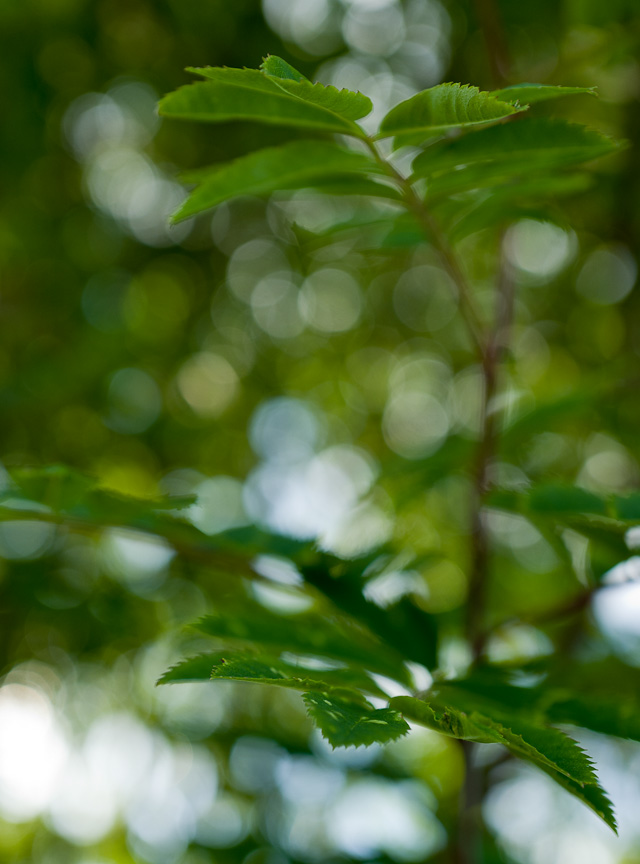
The word macro comes from Greek makros ‘long, large.’ Leica Q in Macro mode, 1ii ISO, f/2.8, 1/500 second. © 2015 Thorsten Overgaard.
Maestro II - A processor developed first as Maestro for the Leica S2 and upgraded to Maestro II for the Leica S (Typ 007). The Leica Q has a Mestro II (Leica Q edition) processor developed by SocioNext Inc. based on Fujitsu's Mibeault architecture.
Megapixel (or MP) - Millions of pixels. See pixel further down. How many units of RGB is recorded by a given sensor by taking height x widt. A Leica M10 delivers a 5952 x 3968 pixel file = 23,617,536 piexls. On a screen the resolution you choose determines the size of the image. Say you have a 5000 pixel wide file and your screen is set for 8000 pixels wide. Then the image will fill only the 5000 pixels fo the 8000 and the rest will be empty, If you then change the screen resolution to 5000 wide, the image would be able to fill out the whole screen.
Meßsucher (rangefinder or distance finder) = Mess = range, sucher = finder. It is always correctly written with the "ß". There are technically not three "s", rather the "ß" and one "s" because it is a word constructed by the combining of two precise words.
mm = millimeter(s), as in a 50mm lens. (Earlier in lens history lenses focal length was given in cm = centimeters; as in a 5 cm lens). For anyone used to centimeters and millimeters, it’s no wonder. But if you grew up with inches, feet and yards, you may have had a hard time grasping what a 50mm lens was. But as lenses were designed first in Europe, the metric system with centimeters and millimeters was used to describe lenses.
The reason a 50mm lens is a 50mm lens is that there is 50mm from the focus plane (the film or sensor) to the center of focus inside the lens. When photography was a young subject, it was engineers who made it all, and the users were expected to understand. The engineers were so into the making of the lenses, that it apparently never dawned upon them that today’s users would think of a 21mm lens as a wide angle lens rather than a lens where there is 21mm from the sensor to the center of focus inside the optics.
ND = Neutral Density filters are grey filters that functions as 'sunglasses' for lenses. They simply block the light so that a lens can work at for example f/1.7 in sunshine.
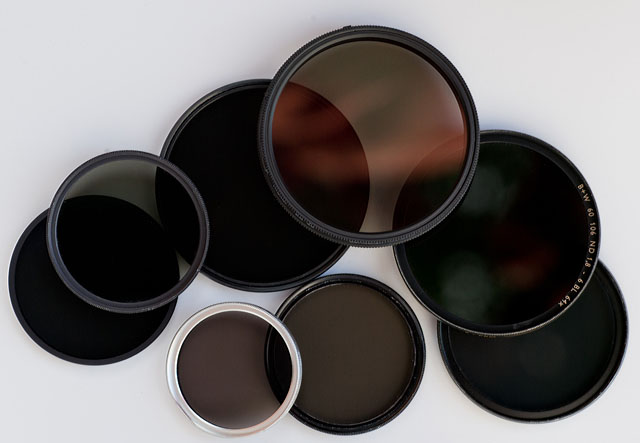
ND (Neutral Density) filters to put in front of lenses to reduce the amount of light that comes in. They don't have any other effect than that and doesn't change contrast, color or anything.
NFC = Near field communication is a technology that enables smartphones and cameras (or other devices) to establish radio communication with each other by touching the devices together or bringing them into proximity to a distance of typically 10 cm (3.9 in) or less.
| |
 |
| |
PASM in the menu of the Leica Q is most likely is made up from the letters of a mode dial on a traditional camera. Nobody knows for sure. |
| |
|
PASM (screen mode) = Basically means that you are in control of the camera and haven't selected any of the Screen Modes available in the Leica Q menu. PASM is most likely short for P = Program Mode / A = Aperture Priority / S = Shutter Priority / M = Manual Control (... what Moron comes up with those silly abbreviation; and then don't explain them in the manual?).
Pixel - Made up word from Pix (picture) and el (element). A pixel is the smallest full-color (RGB) element in a digital imaging device. The physical size of a pixel depends on how you've set the resolution for the display screen. The color and tonal intensity of a pixel are variable, meaning that each pixel contains RGB. This is different from a camera sensor's small eyes (photosite) that are an intensity of either red, green or blue. You could say that the digital sensor's photosite (where each unit collects just one color; red, green or blue) is the input technology, whereas the pixels on a screen (where each pixel contains red, green and blue) is the output device. So while sensors are measured in megapixels (mega = million), it's their output unit of pixels, and not the input unit of photosites that is measured and stated. See illustration below.
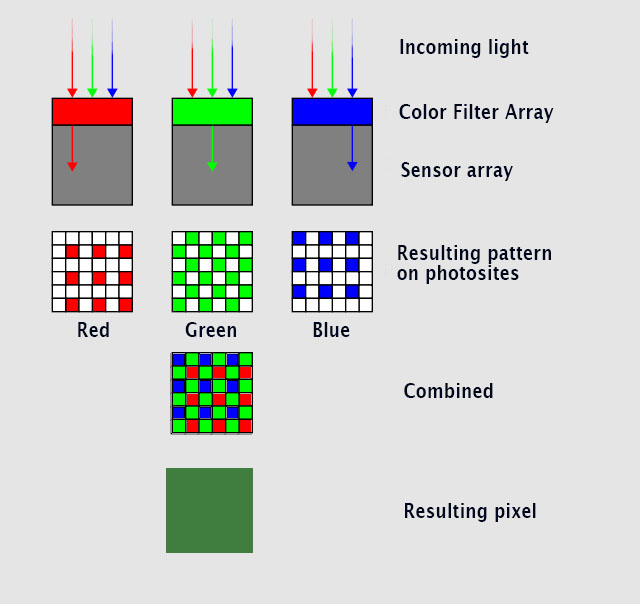
Here's an illustration of how light goes through a color filter that enables the underlying photosites to each record if it';s an R, G or B color - combined - makes up one pixel containing RGB. © Thorsten Overgaard.
S = Single image. When the ring by the shutter release on top of the camera (or in the menu of a digital camera in case it does not have this ring on the ourside) is moved from OFF to S, the camera takes only one photo at the time (Single). The other possibility is Continuous where the camera takes pictures continiously as long as the shutter release button is helt down. (see above).
Saturation: How colorful, intense or pure the color is. Less saturation would be less colorful, more saturation would be more colorful. In today’s photography, de-saturating a photo on the computer will gradually make it less and less colorful; and full de-saturation would make it into a black and white photo.
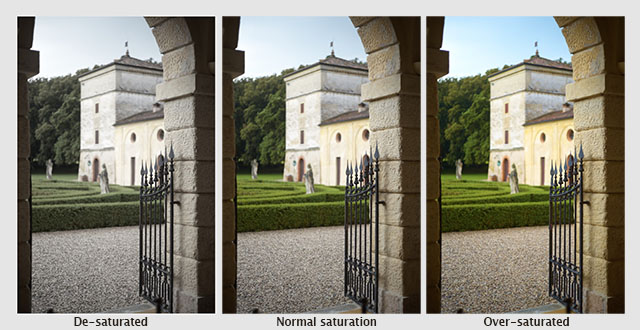
A photo from Verona, Italy de-saturated, normal saturated and over-saturated. © Thorsten Overgaard.
Sensor = A device that detects a physical property (like light) and records it. A camera sensor is a plane plate with thousands of small “eyes” with (photosites) a lens in front of each (CFA, Color Filter Array), which each individually records the amount of red, green and blue light rays that comes through the lens. Together, Red, Green and Blue form all colors of the spectrum, which becomes a pixel. Sensor comes from Latin sens- ‘perceived’.
Screen Mode = A menu point in the Leica Q that allow you to choose different pre-programmed ways of recording stills with the camera. For example Sunset, Snow/Beach, Fireworks, etc.
Nobody knows what the modes does but they sound helpful. Panorama (move the camera and it takes a series of images; just like iPhone) and Time Lapse (interval of images to record change) are also in the Screen Mode menu and may be useful. All screen modes are equally undefined in the manual, so all you can do is try and see if you can figure out what happened. PASM is the setting you use to avoid any pre-programmed modes (see above.
SDC = Software Distortion Correction. A correction of lens distortion (not straight lines) applied in the camera and which is part of the DNG or RAW file. In Lightroom or Capture One Pro the SDC of the camera file is applied automatically (and cannot be removed), in software like AccuRaw one can open the DNG file without the SDC correction. Sean Reid Reviews have written a good article on what SDC is and does in "Software Distortion Correction".
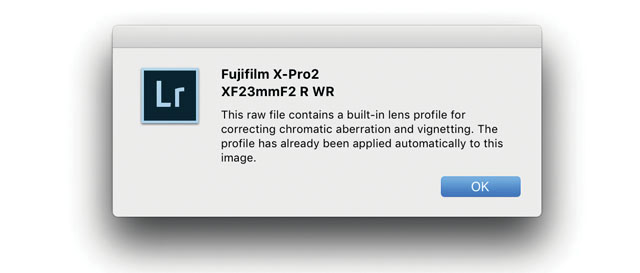
SDC (Software Distortion Correction): In Lightroom the correction profile for the Fujinon 23mm is applied automatically and cannot be turned off. If you go into Develop mode in Lightroom and look under Lens Correction > Profile, you will see a message in the bottom with an exclamation mark. When you click on that, you get the message above.
Shutter speed dial - The dial on top of the Leica M where you can set the shutter speed manually. It can also be set to A which stands for Aperture Priority (where the camera suggests a shutter speed; or when you move the dial away from A, the camera will show arrows in the viewfinder, suggesting which direction to change the Aperture to, to get the correct exposure).
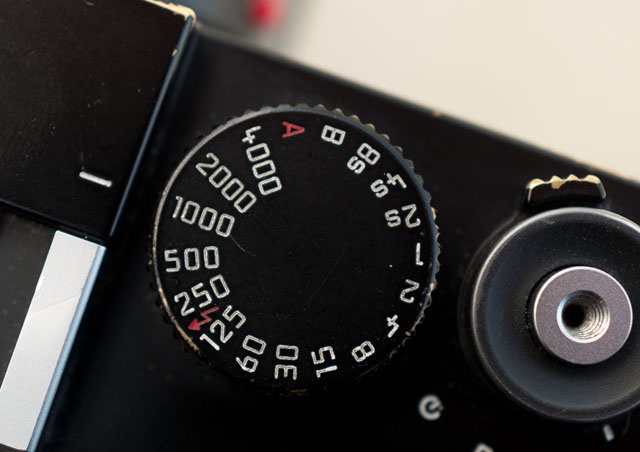
Shutter speed dial set to 1/1000 of a second.
SLR = Abbreviation for Single-Lens Reflex; the lens that forms the image on the film/sensor also provides the image in the viewfinder via a mirror. The Leica Q has no traditional viewfinder and no mirror. the image seen in the EVF is what the sensor sees.
Summilux = Refers to the maximum lens aperture - here f1.4 , "-lux" added for "light" (ie. the enhanced light gathering abilities). In Leica terminology a Summilux is always a f/1.4 lens and a Summicron is a f/2.0 lens. In the Leica Q2 the lens is f/1.7 but is called a Summilux because it is closer to f/1.4 than f/2.0.
Three-dimensional = Having the three dimensions of height, width and depth. In photography and lens design, three-dimensional effect is also the perception of even small micro-details; the texture of skin can appear flat and dead or three-dimensional and alive. Also, selective focus (foreground and background out of focus) can change the perception of depth. Also see Perspective.
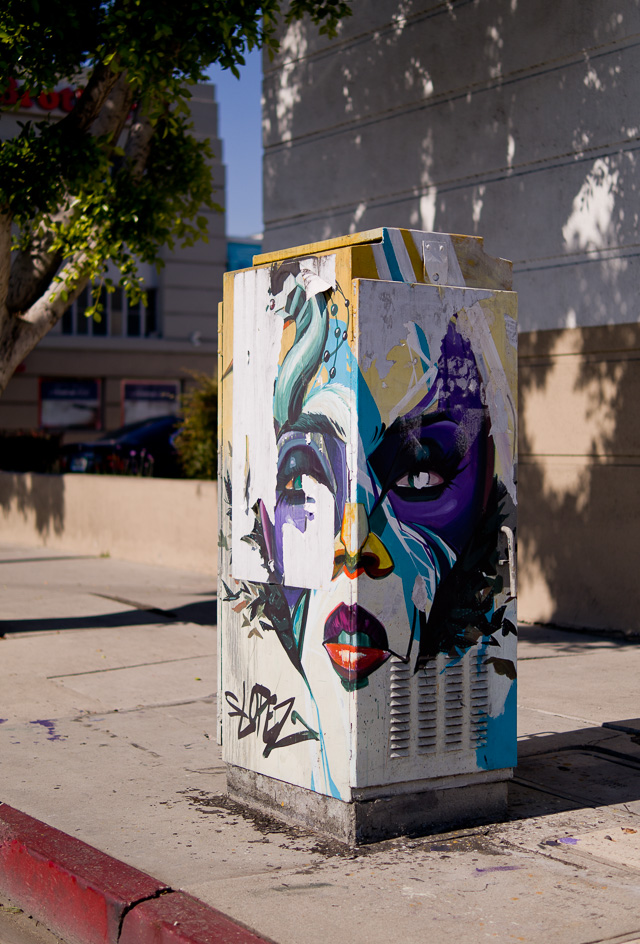
Three-dimensional = Having the three dimensions of height, width and depth. Melrose Avenue in Los Angeles. Leica TL2 with Leica 35mm Summilux-TL ASPH f/1.4. © 2017 Thorsten Overgaard.
Ventilated Shade - A shade is a hood in front of a lens that provides shade from light going straight onto the lens from outside what you are photographing, which could cause internal reflections like flare, which would make the picture less contrasty.
The ventilated shade has holes so it doesn't obstructs the view from the viewfinder. In many of today’s mirrorless cameras where there is no viewfinder looking ver the lens, so there is no actual need for a ventilated shade; but they are considered classic or vintage looking and are still in high demand. It makes no difference for the purpose of the shade (to create shadow) if it is ventilated or not.
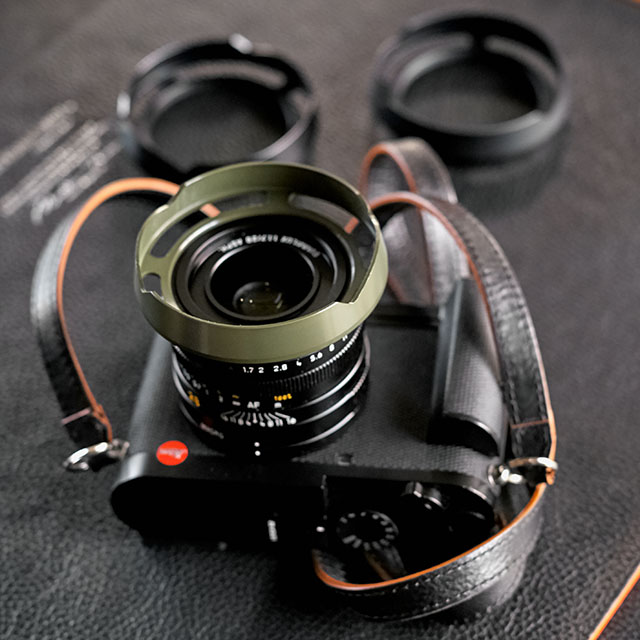
Ventilated Shade for the Leica Q. I make ventilated shades for most lenses and sell them from here.
Viewfinder = a device on a camera showing the field of view of the lens.
1) A built-in viewfinder in a camera that simply show the frame you get when you look through the viewfinder.
2) A rangefinder viewfinder which is also used to focus the lens. In Leica M cameras two pictures has to meet and lay 'on top of each other' for the picture to be in focus.
3) An external viewfinder, usually on top of the camera in the flash shoe, so as to show the field of view of lenses wider than what the built-in viewfinder can show (15mm, 21mm, 24mm, 28mm etc viewfinders exist)
4) Very simple "aiming-devices" on top of a camera that is simply a metal frame without any optics. Just a frame, as for example very old cameras (the original Leica), or when using cameras in diving where you can't look through the camera.
5) A Electronic Viewfinder (EVF) that shows what the sensor sees "live".

|
![]()
